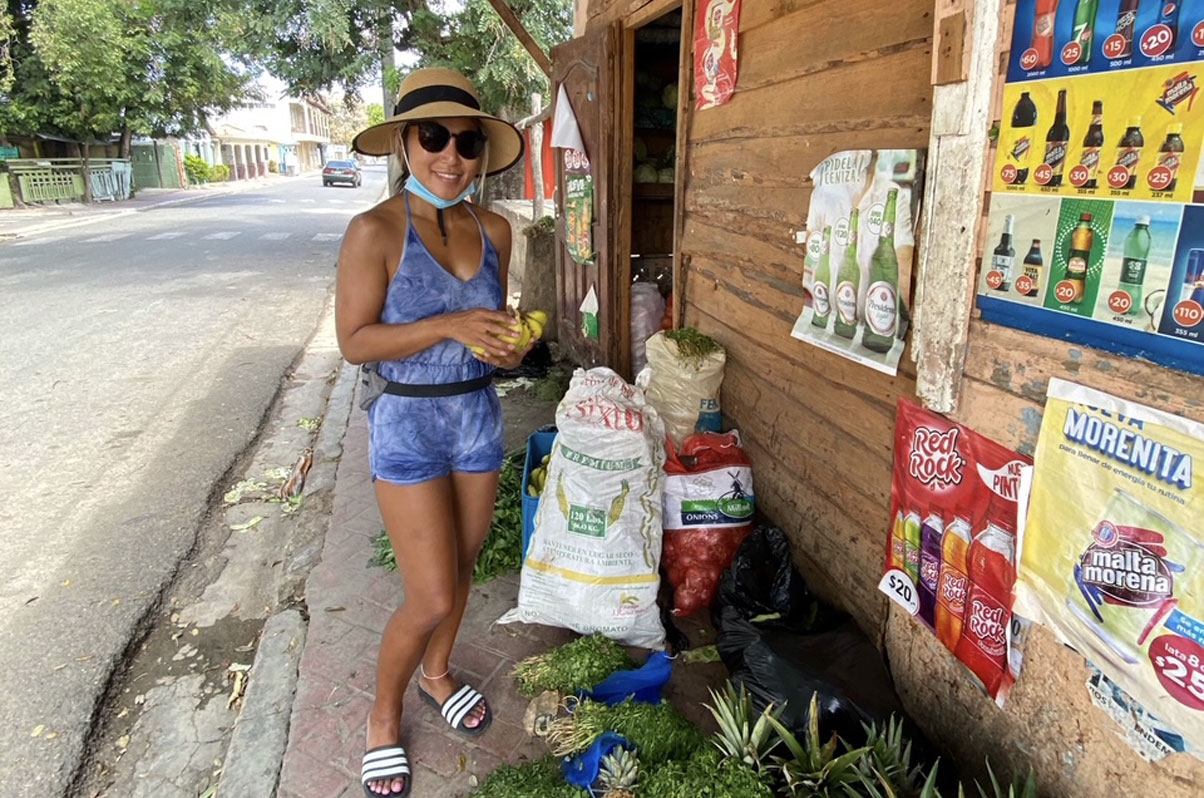
As Canadians who have lived aboard our sailboat in Toronto for both a winter in -40 degrees Celsius and summer in the mid 30s, living conditions on anchor in the Carribean is certainly an adjustment and gets interesting – especially as you get further south, like in Grenada where it’s hot, humid, and everything just feels extra salty!
After spending a year and a half in the Caribbean, we have a few takeaways from our experience living aboard in the heat and all that brings.
Food Storage
As valuable it is to keep the pantry full and stock up on all our favourite North American goodies, the storage of same is equally, if not more important! The further south you go and the longer you stay, critters can and will dig into your stash! Various types of pantry pests feed on grains and come in all sizes and colours.
As such, being mindful of what we brought onboard was just as important. Washing down produce before bringing it into the boat, shaking out bags, and checking food at the grocery store (buying grains in clear bags where you could visibly inspect versus cardboard/paper packaging), are all important measures to take. Weevils could already be present in the food during its transport and during its time on the shelves at non-air conditioned grocery stores.
We’ve opened brand new bags of flour right after getting home from the grocery store only for them to already be infested with weevils. We’ve opened new bags of cereal with grain moths flying out of them and opened the lid to a container of oatmeal and witnessing the oats moving on their own (teeny tiny white flour mites barely visible to the naked eye). All very appetizing!
As for storage, we discard the original packaging of most of what we buy. We’ve found that airtight plastic containers work the best for storage. Ziplock bags aren’t great as these little buggers can chew through plastic. We also placed bay leaves inside food containers and inside cabinets to deter weevils as we read that this could help, however, if they come in via the food you purchase, they’ve got food for a lifetime and for their hatching eggs! It’s also good practice to throw grains in the freezer for 24 hours to kill any eggs present.
We’re not marina people, we enjoy life on anchor but be aware that if your do tie up to any dock or pull into a slip, other creepy crawlers can enter the boat from climbing onto dock lines. To fair on the side of caution of what could be transported via our dinghy, bags etc, we always disposed of cardboard and peeled the labels off from cans. Cockroaches like to hide in damp places like cardboard or the glue and label of food cans.
We also practice regular vacuuming and wiping down of food storage areas, cupboards and cabinets.
Mildew and Mold
Oh, this was a fun. Most fibreglass boats aren’t insulated to the extent where they can withstand the high humidity levels and blistering heat that mildew and mold thrive on. We would tirelessly wipe down all the wood in the boat and treat the interior with a wood oil only to repeat the process three days later. We then used a wipe on poly to treat the wood which seemed to help much more as it sealed the wood. To reduce mold on things like clothing, we vacuum seal garments that aren’t used regularly. This helps immensely. We also make it a habit to wipe down and vacuum the boat every few days to keep on top of it all.
Salty and Wet Everywhere
Being completely exposed to the salty Caribbean air with hatches and port lights open 24/7, means that all things metal don’t stand a fighting chance. Zippers and hardware on clothing, backpacks etc. stop working while electronics and sensitive equipment are always a worry. Applying wax on zippers can help but we didn’t try. Instead, we chose the occasional fight with backpack zippers that hadn’t been used in a while. Electronics are stored in protective insulated cases which have helped their preservation big time. We also use a small dehumidifier in the aft cabin so that our sheets would stay dry. No one wants to sleep in damp bedding! If power consumption wasn’t a concern, we’d probably have them all over the boat.
Staying Cool
As mentioned above, hatches and port lights stay open whenever it’s not raining Being out at anchor, we were far enough away that flies and noseeums/gnats didn’t make their way into the boat but bug screens were an asset in anchorages where we were a bit closer to shore.
We have small 12V fans located in various parts of the boat to keep the air circulating. They barely use any power and once we were down in Grenada, ran 24/7.
We also have air conditioning but with the amount of power needed to run it, we only used it a handful of times while down in Grenada when I’d be cooking down below and the wind died to nil.
The best way to cool off though, jumping in and going for a swim!
There’s certainly a lot to adjust to living fully exposed to harsh heat and humidity, but the sunshine, tropical clear waters and sunsets from the cockpit make it all worthwhile!
To see more from our time in the Carribean and adjusting to boat life, head over to our Youtube Channel and our socials!
Steph
Sailing Jibsea
